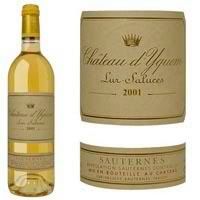Casa Lapostolle - All About Wine Architecture !

 Alexandra Marnier Lapostolle, the French chatelaine of the Marnier-Lapostolle family best known for producing Grand Marnier and owning the renowned Loire estate Chateau de Sancerre, ventured out to Chile in 1994. She has her Chilean winery Casa Lapostolle on an incredible extraordinary fast-track success course. Together with her husband, Cyril de Bournet, Alexandra was determined to diversify the family's business further into wine. After countless visits to Chile the couple settled for Apalta, convinced that this was the place to make great wine. The vision was to produce premium quality wines, blending French expertise and Chilean terroir. It took a decade and about $20 million to put this revolutionary winery, that is solely dedicated to the production of Casa Lapostolle’s world-class icon wine, Clos Apalta onto the international radars. Today Casa Lapostolle receives exceptional reviews, awards and accolades for its wines from across the globe. But more then just the impressive track record of Casa Lapostolle's wine is the winery itself. Alexandra has built the winery of the future here.
Alexandra Marnier Lapostolle, the French chatelaine of the Marnier-Lapostolle family best known for producing Grand Marnier and owning the renowned Loire estate Chateau de Sancerre, ventured out to Chile in 1994. She has her Chilean winery Casa Lapostolle on an incredible extraordinary fast-track success course. Together with her husband, Cyril de Bournet, Alexandra was determined to diversify the family's business further into wine. After countless visits to Chile the couple settled for Apalta, convinced that this was the place to make great wine. The vision was to produce premium quality wines, blending French expertise and Chilean terroir. It took a decade and about $20 million to put this revolutionary winery, that is solely dedicated to the production of Casa Lapostolle’s world-class icon wine, Clos Apalta onto the international radars. Today Casa Lapostolle receives exceptional reviews, awards and accolades for its wines from across the globe. But more then just the impressive track record of Casa Lapostolle's wine is the winery itself. Alexandra has built the winery of the future here.  The winery is 100% gravity-fed spanning five levels, three of which are buried into the granite of the Apalta hillside to provide a natural cool temperature environment for cellaring and aging. This rare vertical design allows the wine to flow naturally downward during every stage of the production, eliminating the need to pump, which can adversely affect the subtle flavors of the wine. All the grapes are hand-harvested and brought to the highest level of the winery where they will be 100% hand-destemmed, a labor intensive technique performed by only very few wineries throughout the world. Fermentation takes place in 21 French wooden vats which size corresponds in size to the parcel of the Apalta vineyard. After two years of aging in two different barrel cellars, the wine is bottled and either departs from the base of the winery or join the underground library in the heart of the winery. Casa Lapostolle’s new Clos Apalta winery is without a doubt one of the most exciting developments in winery architecture in the world over.The philosophy behind the construction of the winery emphasizes the complicity between Man and Nature.
The winery is 100% gravity-fed spanning five levels, three of which are buried into the granite of the Apalta hillside to provide a natural cool temperature environment for cellaring and aging. This rare vertical design allows the wine to flow naturally downward during every stage of the production, eliminating the need to pump, which can adversely affect the subtle flavors of the wine. All the grapes are hand-harvested and brought to the highest level of the winery where they will be 100% hand-destemmed, a labor intensive technique performed by only very few wineries throughout the world. Fermentation takes place in 21 French wooden vats which size corresponds in size to the parcel of the Apalta vineyard. After two years of aging in two different barrel cellars, the wine is bottled and either departs from the base of the winery or join the underground library in the heart of the winery. Casa Lapostolle’s new Clos Apalta winery is without a doubt one of the most exciting developments in winery architecture in the world over.The philosophy behind the construction of the winery emphasizes the complicity between Man and Nature.
Labels: ultimate design, wine










0 Comments:
Post a Comment
<< Home